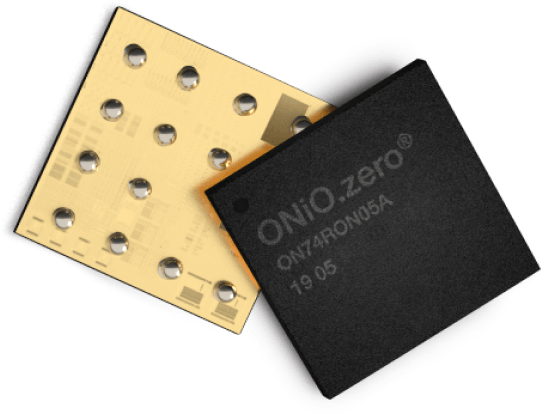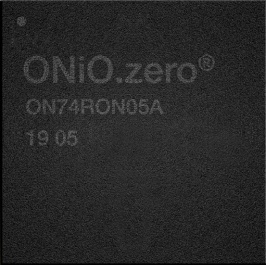Energy harvesting has been an exciting area people have tried to venture into mostly because of the possible applications that can arise from it. Newly invented energy-harvesting technologies accompanying low-power computing systems have pushed the boundaries of where embedded systems can be deployed.
The demand for an increase in connected applications which require an underlying embedded system, and as we know, all electronic devices require a power source of some sort. This power source, batteries in most cases, comes with an accompanying buck regulator of some sort that will tend to increase the BOM. Aside from the BOM rise from the usage of batteries, there is also the shelf life and environmental aspects. The Norwegian specialist ONiO has introduced the ONiO.zero to address those issues.

Having no battery means fewer components and a smaller design, which can easily be integrated into a wide range of solutions – be it fabrics, jewelry, watches, wearable medical devices, livestock or building sensors. More importantly, this makes for a cleaner, more eco-friendly solution.
ONiO.zero is an “ultra-low-power” wireless MCU based on the RISC-V 16/32-bit architecture (RV32EMC) that uses energy harvesting technology to power itself. Unlike similar MCUs that use energy from DC batteries as its power source, ONiO.zero operates solely on energy from its surroundings. The ONiO.zero can handle energy sources from multi-frequency RF bands and external sources like solar, ambient, temperature, kinetic, or voltaic cells.
With the advent of the various wireless devices transmitting and receiving everywhere, the ONiO.zero will have enough harvesting juice to power itself.
At the heart of the ONiO.zero is the free and ever-growing RISC-V instruction set. It is based on the RV32EMC (32-bit and 16 registers with a smaller instruction set) and is capable of running at up to 24MHz when provided 1.8V. It is also capable of operating at lower voltages as well: 1.0V – 6MHz, 0.8V – 1MHz, and go as slow as 450mV with corresponding lower speed while ensuring asynchronous operation from ROM/RAM.
The MCU comes with 1KB of mask ROM supporting the likes of stdlib, math, and other libraries. 2KB of RAM is included along with 8/16/32kB of ultra-low-power flash storage capable of 100,000 write cycles and readable down to 850mV.

ONiO.zero also comes with standard peripherals like I2C, SPI, UART, AES, GPIOs, and others. The device includes a crystal-less BTLE transmitter with a programmable output power (-40 to 0dBm) capable of operating at voltages as low as 850mV. We’ll also find an IEEE 802.15.4 ultra-wide-band (UWB) transmitter in the 3.5 to 10GHz band plus an optional 433MHz MICS radio transmitter for medical devices.
The ONiO.zero energy source comes from an internal radio-frequency rectifier supporting multi-frequency ISM and GSM bands (800/900/1800/ 1900/2400MHz bands) and with 40dBm sensitivity.
ONiO.zero can also work in an environment without a radio-frequency energy source, as it supports voltaic cells down to 400mV (DC), piezoelectric, and thermal (1.8V to 3.6V) energy harvesting. Other features are: operating temperature 40 to 85°C (Industrial grade), ESD protection, latchup > 100mA, and others.
ONiO.zero isn’t released yet. More information is available on the product page.
Via Hackster.io. Thanks to Arnaud for the tip.

I enjoy writing about the latest news in the areas of embedded systems with a special focus on AI on edge, fog computing, and IoT. When not writing, I am working on some cool embedded projects or data science projects. Got a tip, freebies, launch, idea, gig, bear, hackathon (I love those), or leak? Contact me.
Support CNX Software! Donate via cryptocurrencies, become a Patron on Patreon, or purchase goods on Amazon or Aliexpress




